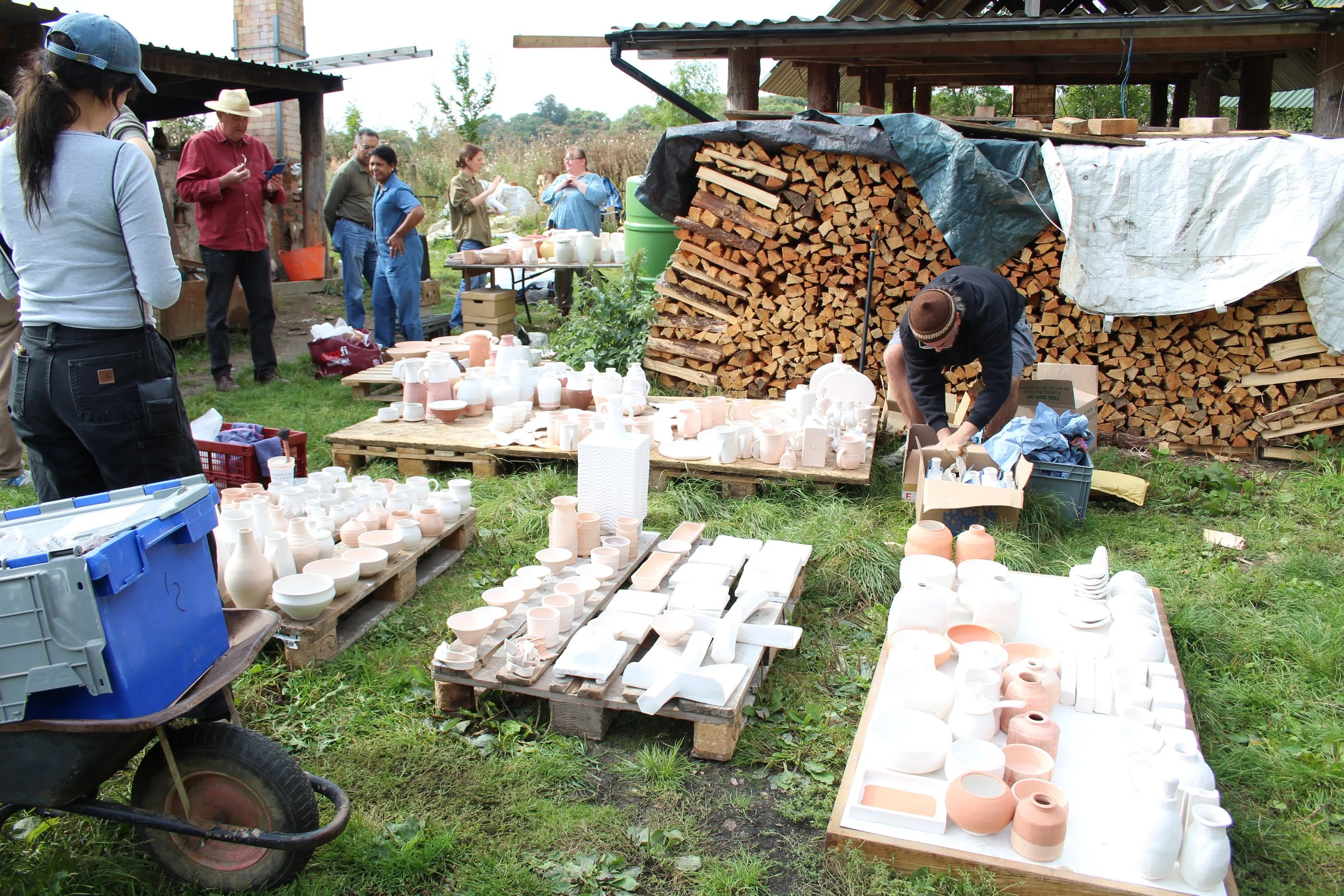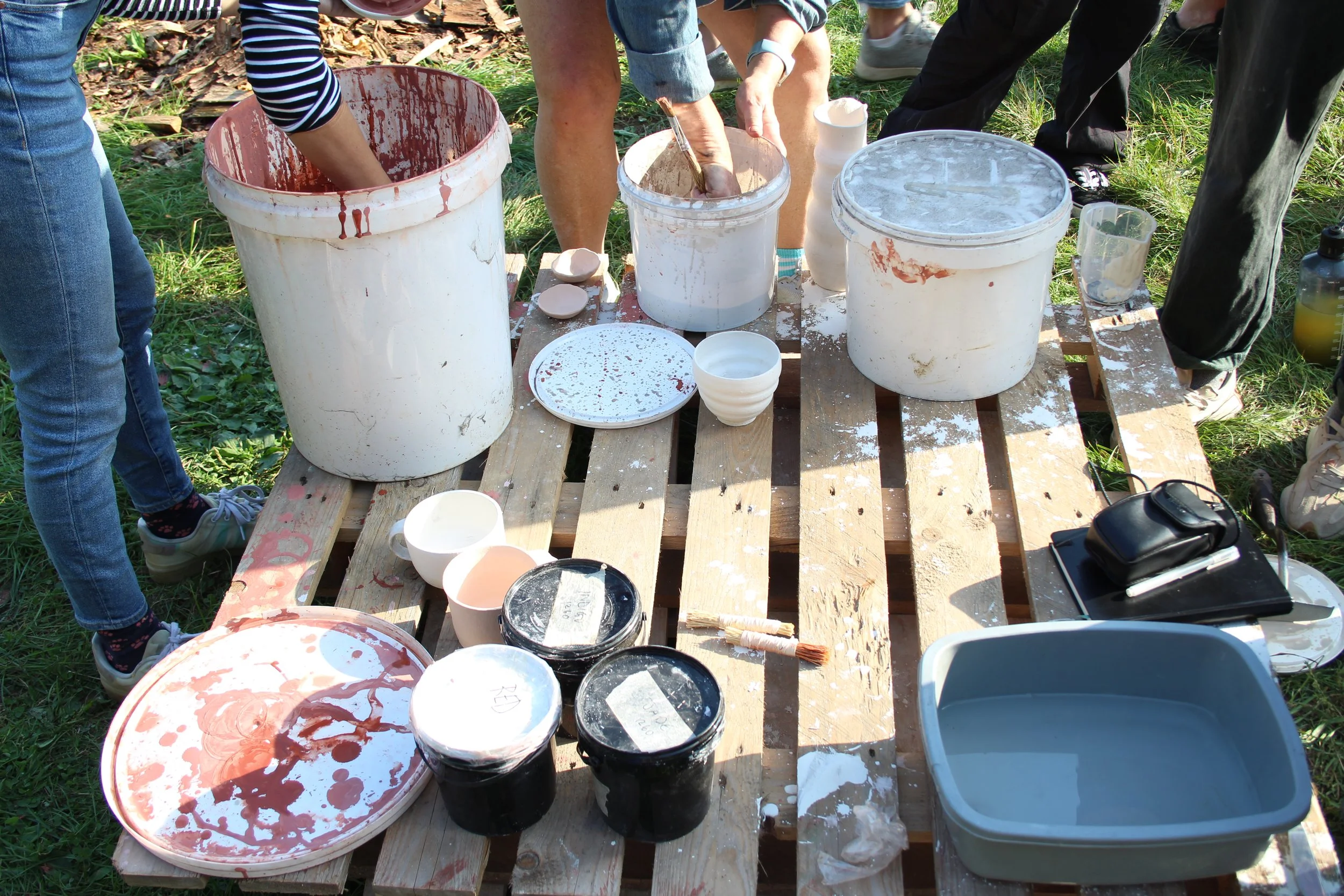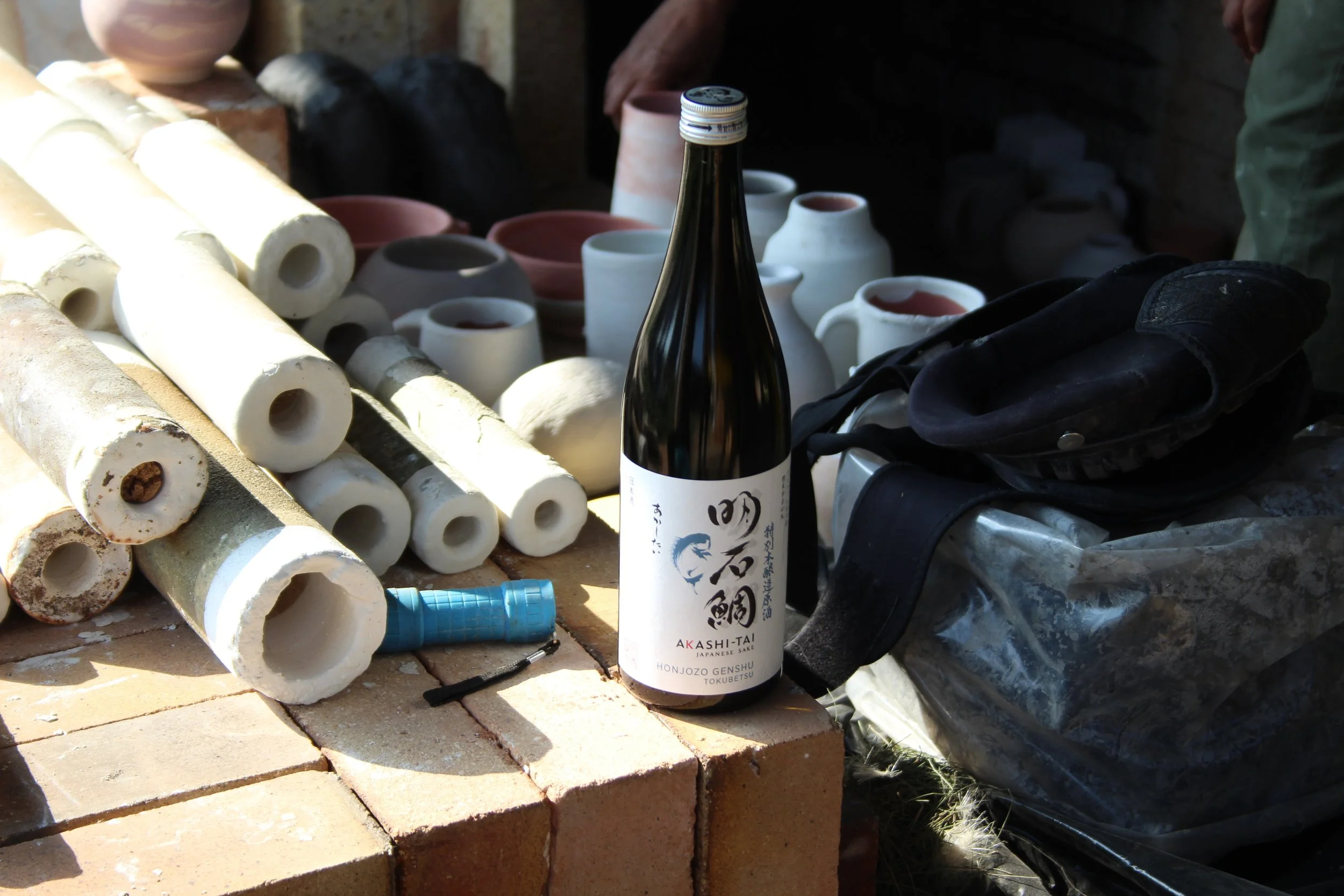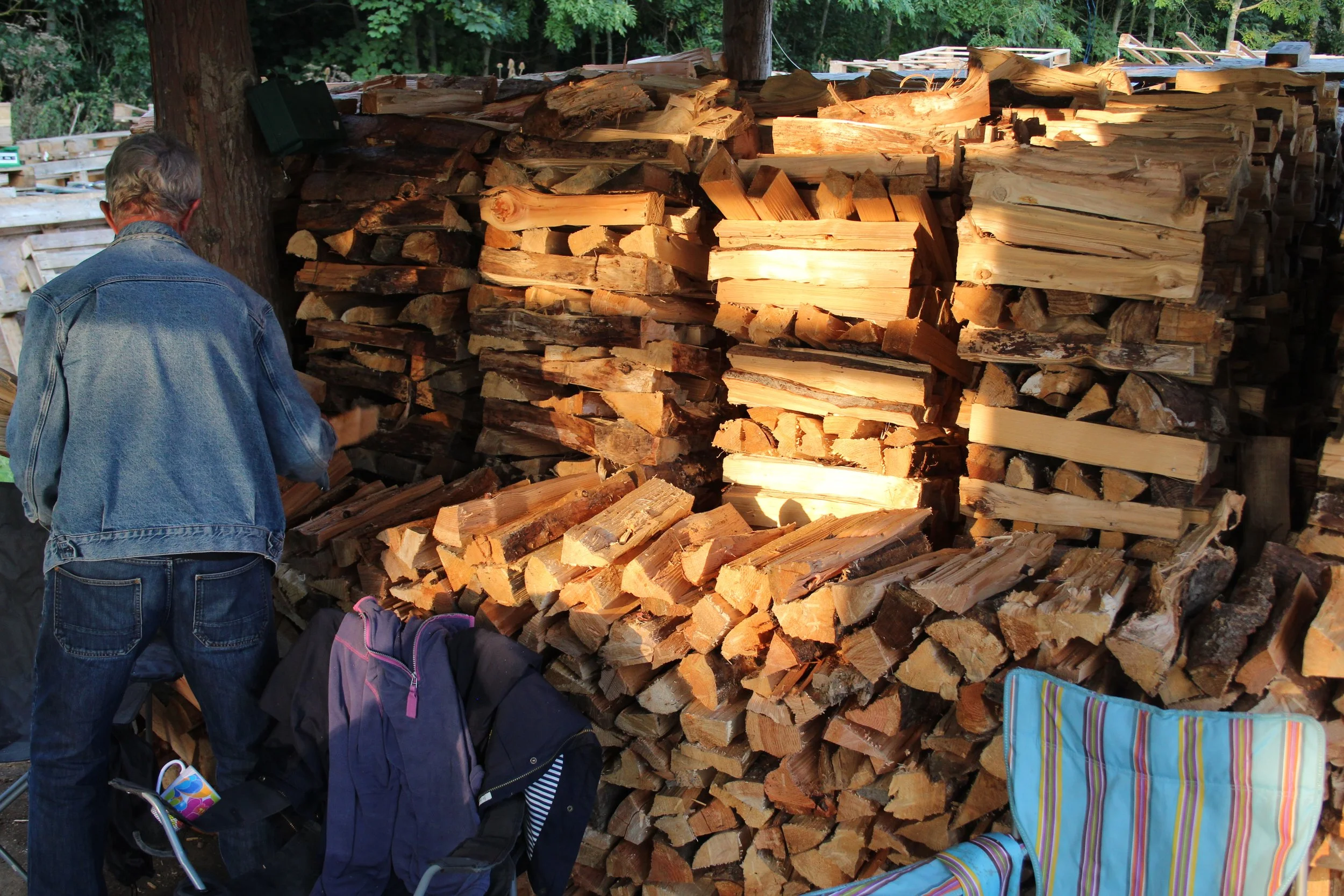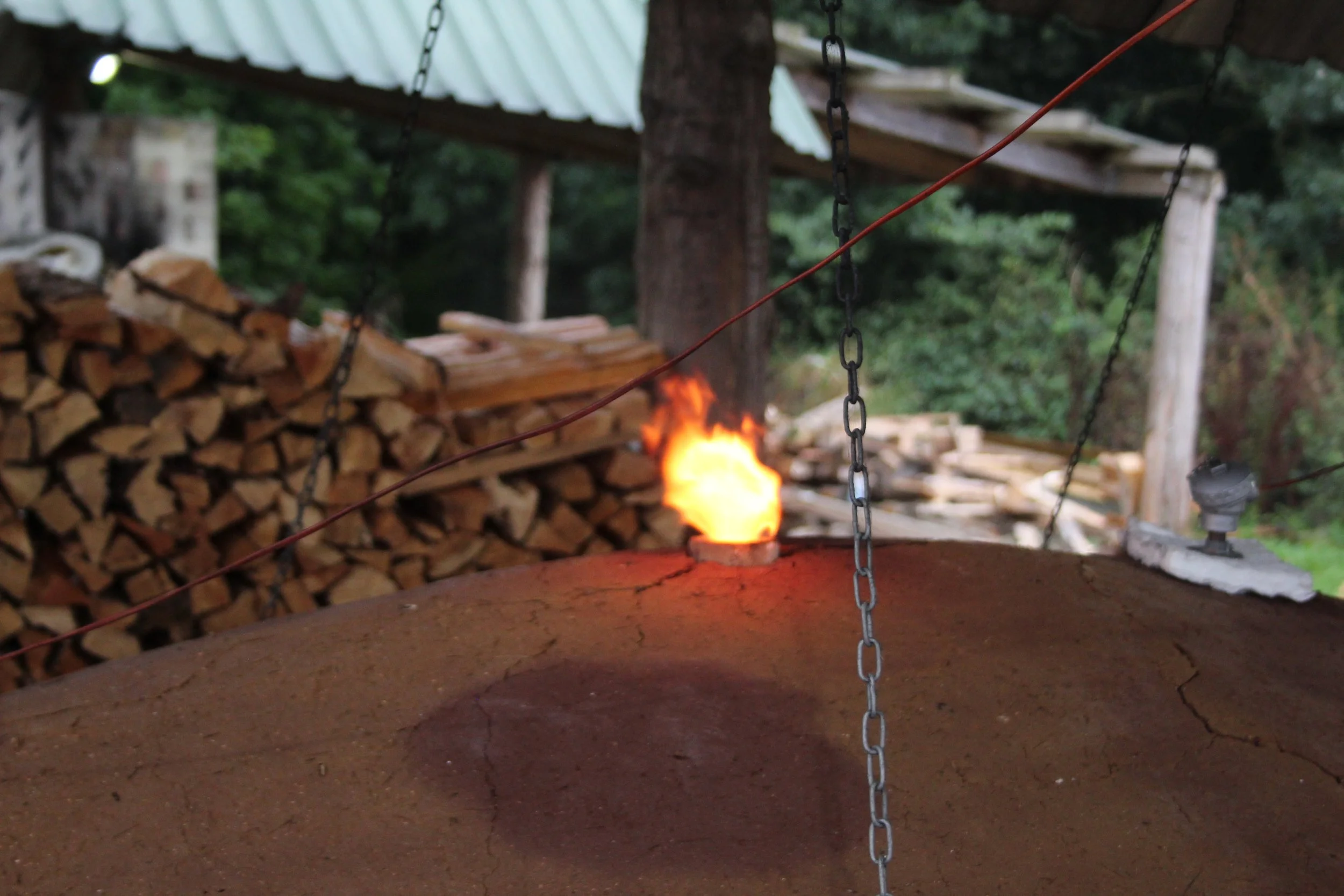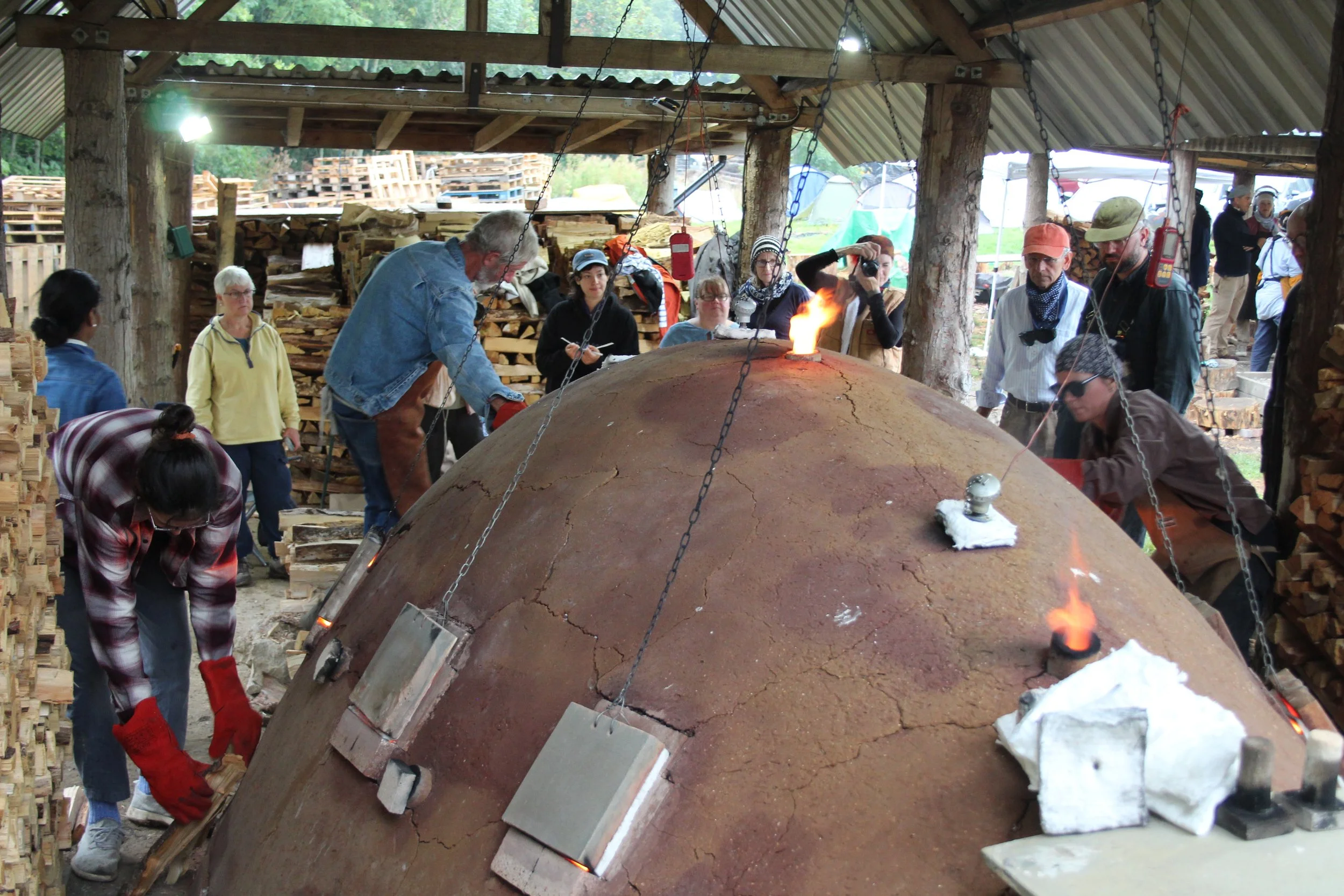Wood Firing in Wytham
In September 2024 I attended a wood firing course lead by renowned potter Svend Bayer at the Oxford University Kiln site, run by Dr. Robin Wilson. I had been wanting to fire in a wood kiln for so long and to finally have the opportunity (thanks to my Arts Council DYCP grant) was incredibly exciting.
I drove down from Manchester at around 5:30- 6am in order to be in Oxford on time for 10am. I was incredibly nervous. As it turned out, the site was to be much busier than usual as there was a second group ( The London Potters) firing the anagama simultaneously. Our group (The Svend Bayer group) all gathered in the car park, and so I became acquainted with the 9 other potters I would be spending the week firing with. All of them were so warm and friendly, and I was instantly at ease.
I wrote a brief diary whilst on site, which I will attempt to flesh out with a bit of further information and recollection.
Day 1 : Preparing pots, glazing and beginning to load. Group SB comprises of Jenny, Sami, Kath, Wendy, Doug, Manju, Jack, Clare, Miya and myself.
Organising the pots into sizes takes a surprisingly long time, We arrange and re-arrange. We glaze the pots in my Shino and 2 mystery glazes, one of which we think is a celadon (turns out not to be at all!).
Svend and Brigitte start making the wadding (50% fireclay, 50% sand). There is also the stacking and arranging of wood, which Svend is quite particular about. The wood pile is very neat and tightly packed. The wheelbarrow sees a lot of action.
In the afternoon, loading begins with Sami and Doug. Miya makes 6 x cones with wadding to be placed along the kiln so they can be seen through the stoke holes.
Day 2: Loading continues. Saggars are placed in the back filled with Mare’s Tail - a plant that is high in silica. We load and wad, I sprinkle some wood as inside a dish and on the wings of my wall vase. We debate over whether all the pots will fit. The kiln is a medieval, Thai-style; built by Svend. It’s a very attractive, bug-like shape and has clearly been lovingly constructed.
We try to trade pieces with the London Potters who are firing in the slightly smaller anagama, but they end up returning some of the pieces as they won’t fit in. The London Potters are loading up their kiln and also intend to fire the two small fast fire kilns that are on site.
Whilst the loading takes place (Brigtitte at the helm), Robin demonstrate the wood splitter, which is a frighteningly powerful piece of machinery that could easily snap a limb if one were not cautious. Luckily, everyone is safety conscious. We chop and stack enormous amounts of wood.
Jenny and i go to the supermarket and in the evening I cook my famous low-effort, chickpea pasta. It is a dish more than the sum of its parts - the ingredients being just chickpeas, pasta, tomato puree, garlic and rosemary. Everyone seems to like it or at least pretends to, which is nice.
After dinner, we pour a small glass of sake and a mound of salt out for the kiln god. We raise a glass and Svend starts a small fire at the front of the kiln. Two large logs stand behind, guarding the pots. My big witch bottle is right in the firebox. I don’t enjoy the taste of sake, unsurprising as I don’t drink much alcohol.
We organise ourselves in groups for the stoking shifts. We are two teams of three and one of four. My team is Miya and Jack and our shift is the most dramatic one - we are stoking between 2pm-6pm and then again at 2am-6am. The chalet group (Wendy, Doug and Kath) are first to start with the 6am - 10am shift.
Day 3 : The firing starts before I wake. The early shift ramps up slowly. I go for a walk with Miya and then stack logs with Jack. We start our shift at 2pm are are nervous about hitting the Quartz Inversion (573°C) - at which point the silica expands (or contracts, if dropping down). We add 2-4 sticks of wood at intervals of 2-7 minutes. We are listening out for the crackle of the fire and nervously watching the pyrometer display the temperature lilting up and down. We are plotting the temp on a graph and we try to stay as close as possible to the curve plotted out by Svend. Ekta comes to check on our progress. We are to push the wood in the firebox back to keep the new wood burning. Ekta tells us it is best to keep the wood flat and parallel to the floor of the kiln. We all get attuned to the rhythm of the kiln. When our shift is over, I stack more wood and Jack goes to pick us up a curry for dinner.
Day 3: We get up for the change over at 1:45am, by which time the kiln is at 900°C. We start reducing the oxygen. A flame appears out of the front bunghole first and then the second. Svend instructs us to watch until the flame disappears, at which. point we are to stoke. This time, we were loading wood into the top door of the firebox.
The door itself is immensely hot, it dangles on a chain and rests on a ledge. We stoke two at a time - with one person steadying the door and one pushing in the wood. Upon seeing the kiln this morning (11:23am), I noticed that the other teams have developed a technqiue of holding a wood block against the door so that your hands don’t touch it (even in gloves it is so very hot). This is named Doug’s Block and it becomes an essential tool in our group firing.
When opening the door, a blast of heat emerges and so we keep our faces covered with fabric. Black smoke appears occasionally after stoking because the rush of oxygen burns off the fuel.
Our afternoon shifts begins at 2pm and the kiln is staying at 1100°C but need constant stoking to keep the reduction going.
Day 4: The kiln is at around 1120- 1140°C when we start our graveyard shift. The kiln feels very hot but getting it to climb proves difficult. We are very tightly in sync with each other and a probably a little bit delirious. We drink coffee and make jokes and stoke constantly, every couple of minutes. When we’re not stoking, we are moving sticks of wood to prepare for stoking. The time passes so quickly, and by the end of our shift we have only raised the temperature of the kiln by about 20°C.
Svend then comes by to oversee the changeover. He stokes the embers and loads the firebox with sticks. He fiddles with the dampener and for a while, the kiln drops a fair bit of heat but by the time he is finished, it has started to climb once more.
Svend told us to sleep for a couple of hours, until around 8am so that we could be present for the final shift. When we wake up the pyrometer was reading 1250°C! A massive temperature increase in just two hours! From this point on, all of the SB group were present to continue front stoking, watching the cones, watching the pyrometer, and finally, starting to side-stoke.
Svend does a ‘petit train’ or ‘wood lid’ technique - filling the font door completely with wood, letting it burn, then pushing the sticks down and refilling. We keep monitoring the cones, waiting for them to droop. We start stoking the middle side holes to try and raise the temp at the back o the kiln.
The cones are uneven, which Svend says is normal, so we continue stoking and eventually move to the back holes. It is so hot that we have to wear goggles and face coverings. When it is my turn I can feel the sweat instantly form on my chest and my whole torso is slick like a seal.
Unceremoniously, Svend declares the final stoke at about 11:30am and we all cheer for the finishing of the firing.

